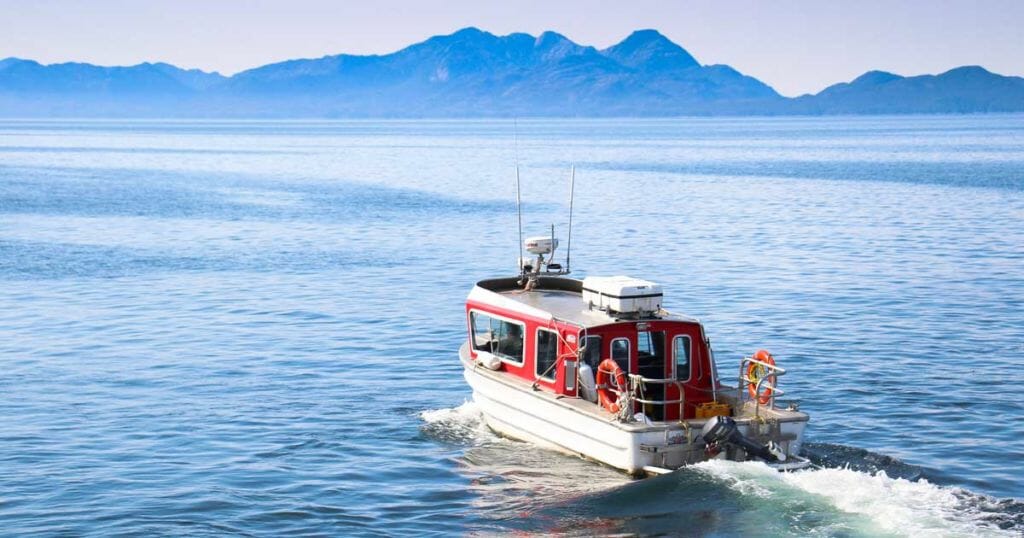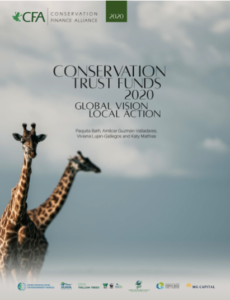Estimated Reading time

3 Mins
Coast Funds featured in Global Report on Conservation Trust Funds

As a First Nations-led conservation trust fund (CTF), Coast Funds stands apart as a globally unique model. Though nearly 50 per cent of conservation funds invest in organizations or associations of Indigenous Peoples, no other fund is centred entirely upon Indigenous-directed governance and self-determination.
All funding decisions originate from First Nations governments who self-determine the initiatives they plan to finance with Coast Funds. Through their regional alliances these governments also nominate Indigenous leaders to Coast Funds’ board. The Indigenous-led board invests the funds as a pool to maximize overall returns and diversification while ensuring that each First Nations government can access their discrete earnings as they self-determine.

Recognizing the Indigenous leadership central to our history and governance, along with a range of achievements by First Nations and Coast Funds since our inception, the Conservation Finance Alliance (CFA) featured Coast Funds as a case study in its new global report on CTFs.
The report comes at a pivotal time where First Nations have requested Coast Funds to evolve in order to continue offering valued services while increasing First Nations’ access to stable, self-determined stewardship finance. The findings in the Conservation Finance Alliance report reflect this request, indicating that conservation funds are an essential component of stable, self-determined finance, but in order to continue offering valued services and funding, they must adapt and evolve.
Globally, conservation funds are an increasingly common method to support stewardship and conservation. Since 2009, conservation funds—including Coast Funds’ endowment and economic development funds—have dispersed US $2 billion, showing themselves to be “an effective and transparent means of providing long term finance for nature.”
Endowments Form Strong Base, But Funds Must Diversify
As with Coast Funds’ model, conservation funds are usually founded with an endowment (like Coast Funds’ endowment fund), generally manage multiple program accounts to effectively administer short-term funding (like the Renewable Energy for Remote Communities fund), pass through funds, a variety of sinking funds (like Coast Funds’ economic development fund), thus managing a diversified funding and programmatic mix.
Endowment funds have proven to be an anchor of stable capital, ensuring organizational resilience thanks to their endowment returns covering a reliable percentage of operating costs, and financing the development of the fund’s own organizational capacity. The report states that “the creation of permanent endowments has been essential to the organizational longevity that allows [conservation funds] to work on conservation issues over longer periods of time.”
However, to remain and grow as a core component of conservation finance, conservation funds must evolve. Relying or being limited to one fund or program account leaves conservation funds at risk of “timing out when a sinking fund is fully expended.” The Conservation Finance Alliance report suggests that conservation funds failure to diversify finance mechanisms and funding sources leaves these organizations at risk of failure. “Most [conservation funds] expect to rapidly diversify funding through other conservation mechanisms,” the report states.
Coast Funds’ Strategic Plan Sets Organization on Path to Evolve
Along the central and north coast of British Columbia and on Haida Gwaii, the First Nations governments Coast Funds serves, have similarly identified the growing need for stable, self-determined finance. Coast Funds must evolve to play a central and essential role as a source of such finance. With our 2020-2022 strategic plan, we are working to proactively address near- and long-term risks to foster conditions where First Nations will continue to access self-determined funding for generations to come.
The report suggests that to be able to successful continue to deliver on their objectives, conservation trust funds focus should diversify their financing mechanisms: “Endowments, sinking funds, and flow-through funds have been useful tools for CTFs, but this is the moment to focus on a new generation of mechanisms.”
Mechanisms listed by the report include:
- Impact Investment
- Biodiversity offsets
- Water tariffs
- Penalties
- Donations
- Partnerships with private sector (financial and non-financial)
- Payment for ecosystem services
- Carbon offsets
The Coast Funds case study (found on pages 125-136 of the report) was authored with contributions from Coast Funds’ CEO Brodie Guy, Merv Child (Coast Funds’ founding director, and Executive Director of Na̲nwak̲olas Council), Chris Trumpy (Coast Funds’ director, and former Deputy Minister of the Ministries of Environment and of Finance of the Province of British Columbia), and Ross McMillan (Member on behalf of Coast Funds’ private funders, and former CEO of Tides Canada, now MakeWay).
